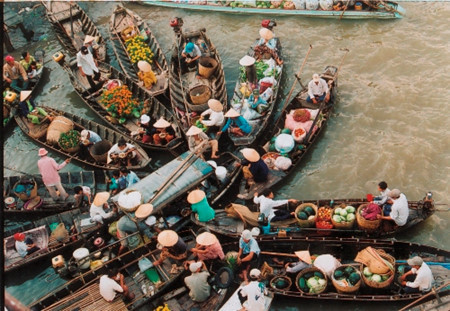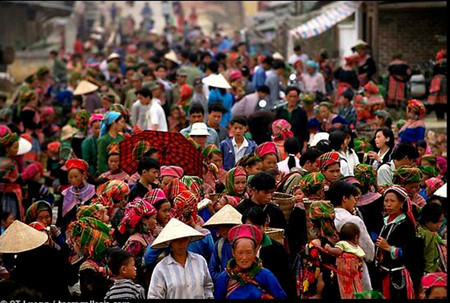Vietnam’s colorful markets
No one can count how many markets there are in Vietnam but many agree that they are the vivid reflection of the Vietnamese culture. Markets vary by regions. It is their uniqueness that inspires tourists.

In the past, each village had one small market and each district has a larger periodic market.
Lu or Lua market in Minh Nong commune, Phu Tho province meets on the 3rd, 8th, 13th, 18th, and 23rd every lunar month.
During these days, the market is more crowded and sells more goods. Local farmers sell their home-made or home-grown products.
Le Thi Dac is a Minh Nong local. He said, "The Lú market has existed for a long time. Previously, our commune was called Ke Lu or Ke Gac , now Minh Nong. Rice is the main commodity here. We also sell vegetables, tea, and other essentials. The market is divided by types of goods on sale".
In the northern mountain region, market sessions are also the community festivals, where locals dress up and come to meet their friends after buying and selling.

In Ha Giang province, the markets meet every week minus one day, which means, if it meets on Sunday this week, in the following week, it will meet on Saturday and so on.
Meanwhile, district markets often meet on Sunday with girls in traditional multicolored dresses, an umbrella in hand and a papoose on the back.
Boys bring with them poultry, pigs and oxen. Mountain markets attract a lot of tourists.
In the south, the Mekong Delta is distinguished by its floating markets, like Ca Mau floating market in Ca Mau province, Cai Be in Tien Giang and Phong Dien and Cai Rang in Can Tho.
Floating markets are closely associated with southerners’ life. Both buyers and sellers go to the market by boat. Cai Rang market in Cân Tho is an example.
The market works all day, but is most busy in the morning, around nine or ten o'clock. The boats gather on the watercourse and trade all kinds of agricultural, food and beverage products.

Ngo Van Truong and Do Thi Nga, two tourists from Hanoi, recount: "It is very interesting to go to the floating market where you can explore the lives of the people in the Mekong Delta. They are quite different from those in northern Vietnam. This is my first visit to the market. It’s fun”.
“This was my first visit to the southwestern region. I feel pleasant. I was impressed with the fruit trade. There were a variety of fruits. It was really exciting.”
Vietnamese markets with their own uniqueness and colors fascinate tourists who come to explore local people’s culture, tradition, and lifestyle.

Leave your comment on this story